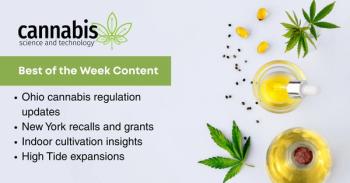
The Evolution of Hemp Regulations: Challenges and Opportunities Under the 2024 Farm Bill
The recent release of the Senate's draft for the 2024 Farm Bill could reshape how this versatile crop is cultivated, processed, and regulated.
The release of the Senate's draft for the 2024 Farm Bill has sent ripples through the hemp industry, bringing with it sweeping changes that could reshape how this versatile crop is cultivated, processed, and regulated. Key among these changes is the inclusion of a “total THC” limit in the definition of hemp and the formal separation of industrial hemp from cannabinoid products intended for consumption. While these updates address long-standing regulatory gaps, they also present significant challenges and opportunities for businesses navigating this rapidly evolving landscape.
The "Total THC" Limit: Closing Loopholes or Creating Barriers?
The new definition of hemp, which sets the threshold at 0.3% total tetrahydrocannabinol (THC), represents a stricter interpretation of the crop’s psychoactive limits. Previously, regulations focused solely on delta-9 THC, leaving room for loopholes that allowed certain products to avoid scrutiny. By including both delta-9 THC and tetrahydrocannabinolic acid (THCA) in the calculation, the updated rule aims to close these gaps and bring more consistency to the industry.
However, this shift introduces significant compliance hurdles. Achieving a total THC level of 0.3% or below will require growers to adopt precise cultivation techniques, such as tighter genetic selection and harvest timing. The variability in testing methods across states adds another layer of complexity, making it difficult for farmers to ensure their crops meet federal standards.
For processors and manufacturers, the stricter definition could necessitate adjustments to extraction and refinement processes, potentially increasing costs. The industry will need to invest in education, technology, and resources to adapt to these requirements. Without federal standardization of testing protocols, the risk of discrepancies remains high, putting businesses in a precarious position during audits or market entry.
Separating Industrial Hemp from Consumable Products: A Strategic Move
One of the most notable updates in the 2024 Farm Bill is the separation of industrial hemp from consumable hemp and cannabinoid products. This distinction is a welcome change for an industry that has long struggled under a one-size-fits-all regulatory approach. By categorizing these products based on their intended use, lawmakers are addressing the unique risks and applications of each segment.
Industrial hemp, which is primarily used for textiles, bioplastics, construction materials, and other non-consumable goods, requires fewer regulatory burdens compared to consumable products. This separation allows for streamlined compliance processes, making it easier for industrial hemp businesses to focus on innovation and scaling production.
Conversely, consumable hemp and cannabinoid products such as cannabidiol (CBD) oil, gummies, and beverages are subject to stricter oversight. This ensures that products entering the market meet rigorous safety and quality standards, protecting consumers while maintaining the credibility of the industry. The bifurcation could also reduce confusion among regulators and consumers, fostering greater trust in hemp-derived products.
The Testing and Standardization Challenge
The new regulations highlight the urgent need for standardized testing protocols across the hemp industry. Disparities in testing equipment, methodologies, and reporting have led to inconsistent results, making it difficult for businesses to reliably comply with THC thresholds. These inconsistencies also fuel issues like “lab shopping,” where producers seek out labs likely to report favorable results, further undermining trust in the industry.
To address this, federal and state governments must work collaboratively to establish uniform testing standards. Third-party accreditation of testing laboratories could also play a key role in ensuring reliability and transparency. Without these measures, businesses will continue to face uncertainty, and consumers will lack confidence in hemp-derived products.
Unlocking Hemp's Potential: Economic and Environmental Opportunities
Despite these challenges, the 2024 Farm Bill could unlock significant opportunities for the hemp industry, particularly in the realms of economic growth and environmental sustainability. Industrial hemp, with its potential applications in textiles, biodegradable plastics, and even carbon sequestration, could become a cornerstone of the green economy. By providing a clearer regulatory framework, the bill could encourage investment in research and development, paving the way for new innovations.
For example, hemp’s ability to absorb carbon dioxide and improve soil health makes it a valuable tool in combating climate change. With the right incentives and support, the industry could expand its role in sustainable agriculture and construction, creating jobs and reducing environmental impact.
What’s Next for Hemp Businesses?
As the industry adapts to these changes, businesses should focus on proactive strategies to ensure compliance and capitalize on emerging opportunities. Key areas of focus include:
- Investing in Compliance Infrastructure: Companies should prioritize robust testing and quality assurance programs such as
cGMP Certification to meet the new total THC limits and other regulatory requirements. - Advocating for Standardization: Industry leaders must work together to push for standardized testing protocols and clearer guidelines at both the federal and state levels. Many companies are working towards writing these standards such as the
S3 Collective andASTM International . Getting involved by donating to these organizations or volunteering your time is a great way to help move the needle in the right direction. - Exploring Industrial Applications: The separation of industrial and consumable hemp creates new opportunities for businesses to innovate in non-consumable markets, such as textiles, construction, and bioplastics.
- Educating Stakeholders: Clear communication with regulators, consumers, and industry partners will be critical in navigating these changes and building trust.
A Pivotal Moment for the Hemp Industry
The 2024 Farm Bill marks a pivotal moment for the hemp industry, balancing stricter oversight with new opportunities for growth and innovation. While the inclusion of total THC limits and the separation of industrial and consumable hemp products pose challenges, they also address long-standing issues that have hindered the industry’s development.
For hemp businesses, this is a time to adapt, advocate, and innovate. By embracing these changes and working collaboratively toward a more unified regulatory framework, the industry can unlock its full potential as a driver of economic growth and environmental sustainability. The road ahead may be complex, but with the right approach, the future of hemp looks brighter than ever.
About the Author
Kim Anzarut, CQA, CP-FS is the CEO and founder of Allay Consulting. Direct correspondence to:
Newsletter
Unlock the latest breakthroughs in cannabis science—subscribe now to get expert insights, research, and industry updates delivered to your inbox.





